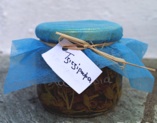Much less common on Skopelos than P. lenticus, the closely related, turpentine tree usually occurs as a large shrub or small tree as part of the complex mix of vegetation which makes up the Macchie. It is most common in the Karya Valley. The scientific species name comes from the ancient greek, tereminthos (τέρεμινθος).
The branches are more open than P. lenticus. The leaves are composite with 3-6 pairs of opposite leaflets and a single terminal leaflet. The plants are, like all members of the pistachia family, are dioeious, tht is the male and female flowers are on separate trees. The male flowers have attractive feathery structure and become bright red, appearing in spring amongst the fronds of new pink tinged foliage. The autumn berries are in open bunches , they are red at first and turn black when mature.




